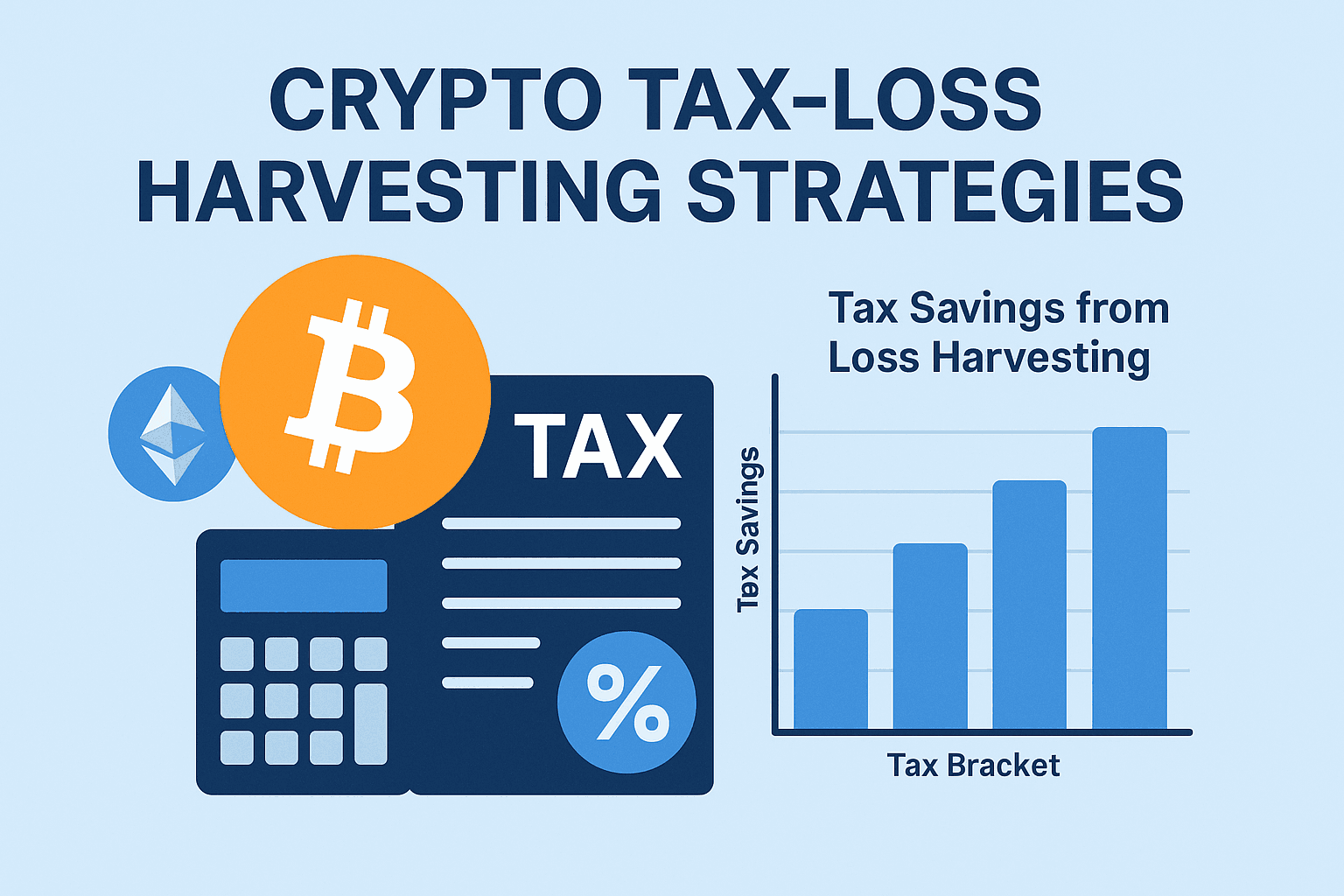
Crypto markets are volatile. You can be up 40% one month and down 60% the next. But believe it or not, that volatility can work in your favor—especially at tax time. If you’re sitting on unrealized losses, it may be time to consider crypto tax-loss harvesting.
This strategy, already popular with stock investors, lets you sell losing crypto positions to offset capital gains or even reduce your ordinary income taxes. And thanks to how the IRS currently treats digital assets, it works slightly differently—and often more favorably—than it does with stocks.
Here’s how to take advantage of it, safely and smartly.
What Is Crypto Tax-Loss Harvesting?
Tax-loss harvesting is the process of selling an investment at a loss to offset other capital gains (from crypto, stocks, or real estate), or reduce up to $3,000 of regular income per year.
Once you’ve harvested the loss, you can:
- Reinvest in a different (but similar) crypto
- Or wait and buy back the original asset after a period of time
This tactic is most useful toward year-end, but you can apply it any time the market dips.
Why It Works Differently for Crypto
Unlike stocks, cryptocurrencies are not subject to the “wash sale rule” under current IRS rules.
This means you can:
- Sell your crypto at a loss
- Immediately buy back the same asset (e.g., sell and rebuy ETH)
- Still claim the full loss on your taxes
This loophole makes crypto tax-loss harvesting more flexible than with equities.
Example: Harvesting a Crypto Loss
Let’s say you:
- Bought 2 ETH at $3,000 each = $6,000 total cost basis
- ETH drops to $2,000 each = $4,000 total value
- You sell both ETH, realizing a $2,000 capital loss
- Then rebuy ETH minutes later to keep your position
You’ve locked in the loss for tax purposes, but still hold the same investment moving forward.
How Much Can You Save?
Let’s break it down visually.
Bar Chart: Tax Savings from Crypto Harvesting
| Tax Bracket | Loss Harvested | Potential Tax Savings |
|---|---|---|
| 15% | $3,000 | $450 |
| 22% | $3,000 | $660 |
| 32% | $3,000 | $960 |
If you have gains elsewhere (like from NFTs, DeFi, or stocks), harvested losses can cancel them out.
Key IRS Rules to Follow
Even though crypto isn’t subject to the wash sale rule yet, the IRS is watching closely. Make sure you:
- Use a reputable tax tracking tool like CoinTracker, Koinly, or TokenTax
- Keep detailed records of trades, dates, amounts, and exchanges
- File your crypto taxes using Form 8949 and Schedule D
If legislation changes, the IRS may apply wash sale rules to crypto in the future—so check the rules annually.
Smart Tax-Loss Harvesting Strategies
1. Harvest Losses Monthly or Quarterly
Rather than waiting until December, consider checking for harvestable losses every month. Crypto is so volatile that opportunities appear and disappear quickly.
2. Offset Short-Term Gains First
Short-term gains (held <1 year) are taxed at your regular income rate—so harvesting losses to offset these is more valuable than long-term gains.
3. Reinvest in a Correlated Asset
If you don’t want to risk price movement after selling, consider reinvesting in a similar (but not identical) coin. Example:
- Sell SOL for a loss
- Rebuy AVAX or MATIC to maintain smart contract exposure
4. Stack Losses to Use Later
Can’t use all your losses this year? No problem. You can carry forward unused losses indefinitely to offset future gains.
5. Don’t Harvest Too Aggressively
If you have no gains to offset, limit your harvesting to $3,000 per year (the maximum deductible against regular income). The rest just rolls forward.
Risks to Watch Out For
- Price rebounds immediately: You might sell at a loss and rebuy higher
- Slippage or trading fees: Can eat into your savings
- IRS scrutiny: Don’t abuse the lack of wash sale rule by wash trading excessively
- Future rule changes: Congress may close this loophole eventually
Tools to Automate the Process
These platforms support automatic or guided crypto tax-loss harvesting:
- ZenLedger – Harvest planner and capital gains dashboard
- TaxBit – Integrates with exchanges and CPAs
- Accointing – Real-time portfolio plus tax optimization features
Many integrate with TurboTax or export clean IRS reports for easier filing.
Who Should Use Crypto Tax-Loss Harvesting?
This strategy works best if you:
- Trade frequently or hold multiple crypto assets
- Had gains from NFTs, DeFi, or other investments
- Expect to owe short-term capital gains
- Want to reduce taxable income and rebalance your portfolio
It may not be useful if:
- You’re a strict HODLer with no gains to offset
- You’re in a very low tax bracket
- Your holdings are in a retirement account (like a crypto IRA)
Final Thoughts
Crypto tax-loss harvesting is one of the smartest moves you can make to reduce your tax bill—legally—while continuing to hold the same assets.
Thanks to the current IRS treatment, it’s easier to harvest losses in crypto than in stocks. But that could change, so take advantage of the opportunity while it’s still available.
With proper tracking, smart timing, and a few strategic moves, your portfolio can weather the bear market and set you up for future growth. As always, consult a tax professional before making any major moves.